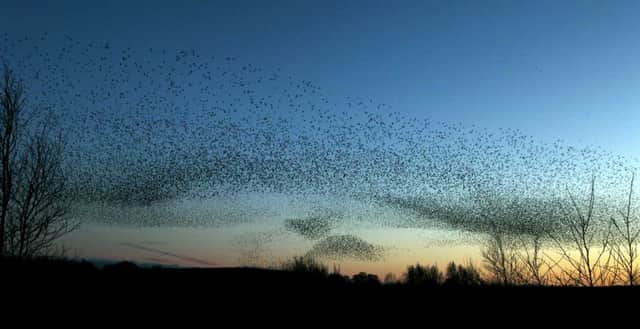Starling take to the skies en masse at Stoney Middleton


Each evening since November members of the public have come to witness the amazing spectacle of a murmuration, where the birds return from their daytime feeding grounds to roost in a reedbed owned by the company. Starting with a small group, the birds are joined by other groups as dusk approaches to perform a breathtaking aerial winter dance in their tens of thousands before descending to the reedbed for the night.
Tim Birch, Derbyshire Wildlife Trust’s conservation manager, says: “Sights like this really are one of the most amazing wildlife spectacles on the planet and this particular roost is of county and national significance. At times it has been estimated that there have been nearly one hundred thousand birds here. These sites are incredibly important for starlings and given the dramatic drop in their numbers in the UK in recent years we need to do all we can for these birds.”
Advertisement
Hide AdAdvertisement
Hide AdStarling numbers rise during the winter when the resident British population is boosted by large numbers from Scandinavia, eastern Europe and Russia. It is thought that they gather together in such large numbers as a defence against predators, to keep warm and to pass on information about the best feeding sites. Murmurations like this occur from November to February. There are other murmurations throughout the county, including at Derbyshire Wildlife Trust’s Willington Gravel Pits in the Trent Valley.
Tim Birch continues: “Derbyshire Wildlife Trust congratulates British Fluorspar for providing opportunities for people to come and witness this amazing spectacle on their land this winter. The starling roost occurs in a reedbed that has grown up on disused workings within the company’s grounds and is now a reserve for wildlife. Starlings regularly return to favourite winter roost sites so we hope that this free natural spectacle will be enjoyed for many more years to come.”
Adrian Cooper, Cavendish Mill works manager, said: “As a company British Fluorspar is pleased to allow interested parties to come and observe the murmuration. As the site is close to the main production plant, in the interest of safety the only request we would make is that visitors keep to the marked pathway to the hide and park their cars to maintain traffic flow and allow access to farm gateways for our neighbours. Although each year there are a number of birds in and around the reedbed, the last time that there was such a large gathering was around six years ago and we look forward to seeing our feathered visitors in future years.”